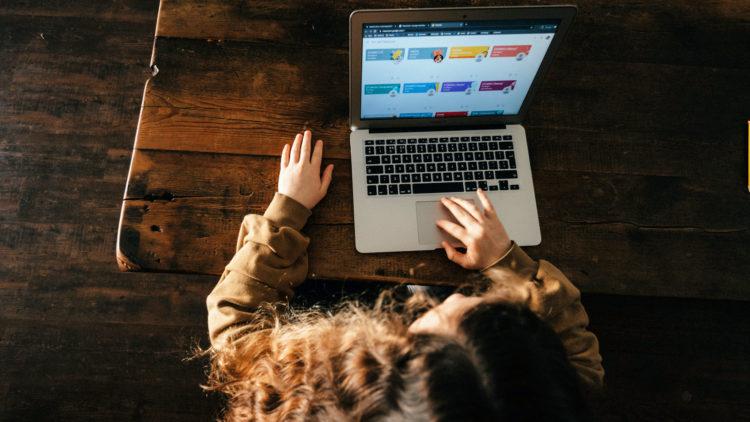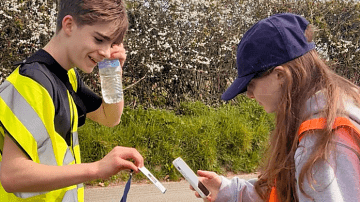Many students are now home-schooling, either as a result of being locked down or from self isolation. This presents a real challenge to parents of how to ensure their child’s home-education is effective.
If you asked a hundred home ‘teachers’, each of them is likely have a different approach, but there are various steps you can take to get the most out of home-schooling.
With the number of children being home educated having risen by nearly 40% because of the pandemic, Oxford Home Schooling, one of the UK’s home education providers, has shared its 10 tips for how to effectively home-school.
1. Take breaks
A bit of experimentation should identify what works best for you and the child. You might find 30-minute blasts followed by 10-minute breaks help to keep your concentration up. Alternatively, you might prefer to work for longer periods at a stretch and then enjoy a longer break.
Boring as it might sound, giving your learning a predictable structure and routine does help to make sure you get everything done!
2. Make a routine
Children get the most out of home-schooling when parents decide when and what they should be studying. At school, the typical day might consist of seven 40 minute periods – four in the morning and three in the afternoon. So should parents try to emulate this?
Most children (and adults) are not able to concentrate for long periods of time
It’s important to remember that most children (and adults) are not able to concentrate for long periods of time, whatever the learning environment and kids do not concentrate on their studies for five hours a day at school. The average lesson is filled with interruptions and irrelevancies and the real ‘work’ might be condensed into 10 minutes. The same is true at home. Even if you have assigned 40 minutes to a subject, do not be surprised if the useful work is done in just 10 minutes and the rest is spent in (apparently) less productive activity.
Organisation is not simply a matter of time slots. It is a combination of timetabling and study objectives. By setting routines, children will find it easier to stay focused, engaged and make progress.
3. Get rid of distractions
It’s really hard to focus when the TV’s blaring, the radio’s on or there is lots going on in the place you’re working, so try and get rid of the distractions. Also, concentrating is easiest when you’re in a quiet, comfortable place, so play around with how you and your child study – sitting, standing or lying down; inside or outside; with lots of light or without – and find a method that helps them concentrate.
4. Divide up the work
Sometimes it can be difficult to motivate yourself when faced with a really big or difficult task. The best solution is to break it down into smaller pieces, planning out the various stages that need completing before you start. This way, your child will know what needs doing and you’ll both get a good sense of progress as you work.
5. Get lots of sleep
It’s an accepted fact that if you don’t get enough sleep, you’ll find it harder to concentrate, learn and retain information. The trick is pretty simple – get some sleep! Most people between the age of five and 11 need 10 to 12 hours of sleep per night, while 11 to 18-year-olds need 8 to 10 hours.
6. Don’t multitask
Sometimes, particularly when there’s a lot of work to be done, it can be hard to resist the urge to multitask and try and get lots of jobs done at once. This is best avoided though, as, in essence, you’re dividing up the amount of brainpower you have available to a given task, meaning you might miss out on important bits of information.
7. Meditate and reduce stress
Plenty of scientific studies have shown the benefits of sitting silently, with your eyes closed and the mind focused on the present. This can dramatically reduce stress levels – a factor that’s been proven to exacerbate tiredness and reduce memory retention.
8. Utilise TV and online learning
Technology is a massive part of education both in schools and at home. Sites like BBC Bitesize and Geography Games are great for delivering educational content in a fun, engaging way.
It can also be used to keep in touch with the home-schooling community to share tips and advice.
If you’re temporarily home-schooling, then tools like Google Classroom can help you interact with your class and teacher from school. Make sure you understand which (if any) technology platform your child’s school is using.
It’s also important to keep active, so consider watching Joe Wicks’ new online PE class for kids on YouTube, which goes out at 9am every weekday.
9. Stick to the curriculum
It’s important to try and cover all of the subjects your child is used to learning about, but don’t worry too much about spending an equal amount of time on each.
You will naturally have greater knowledge in some areas than others and it’s fine to lean on these more heavily. However, your child may have interests in subjects you are less familiar with, and it would be a shame if they were unable to continue learning about these during this period. Avoiding these topics altogether could result in your child losing their passion.
If you are unsure about any content, it can be quite refreshing to do some research yourself and learn something new, before passing on the information to your child.
10. Make it fun
Learning doesn’t have to be a chore, there are hundreds of games you can play to exercise your brain, including the following memory tests.
There are card games where you have to match pairs or groups of face-down cards, flipping two each turn and reverting them face-down if they’re not a pair.
You could also place a number of small, random items on a tray, memorise the items for a minute, then cover the tray, listing as many of the items as you can remember in a given time period.
Then there are two-player games, such as Memory Master, where one player stares at a picture (magazines, books or photos all work) for a minute, after which the second player quizzes them on all aspects of the picture.
Ten recommended online learning resources:















